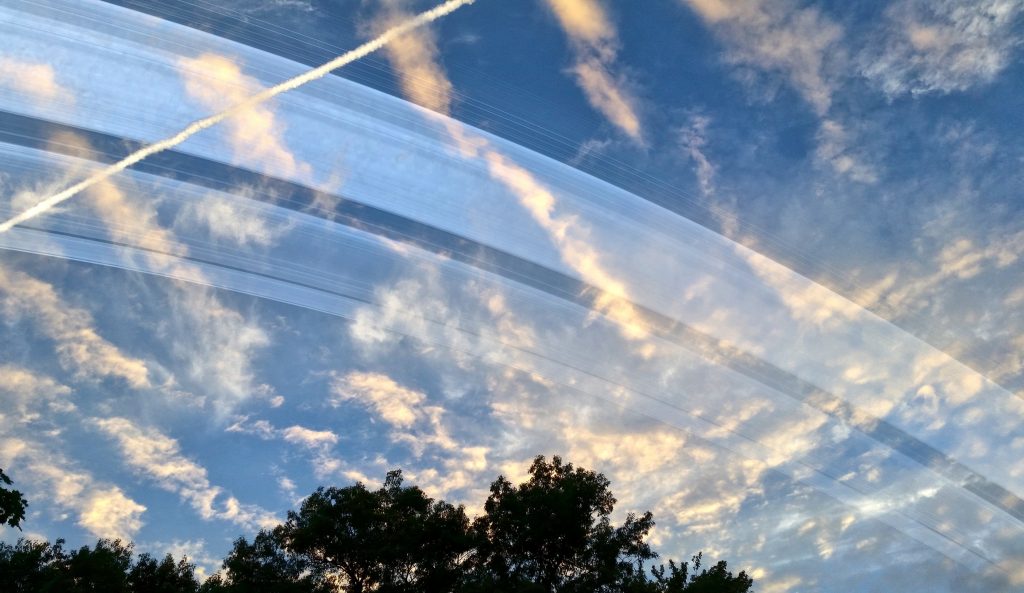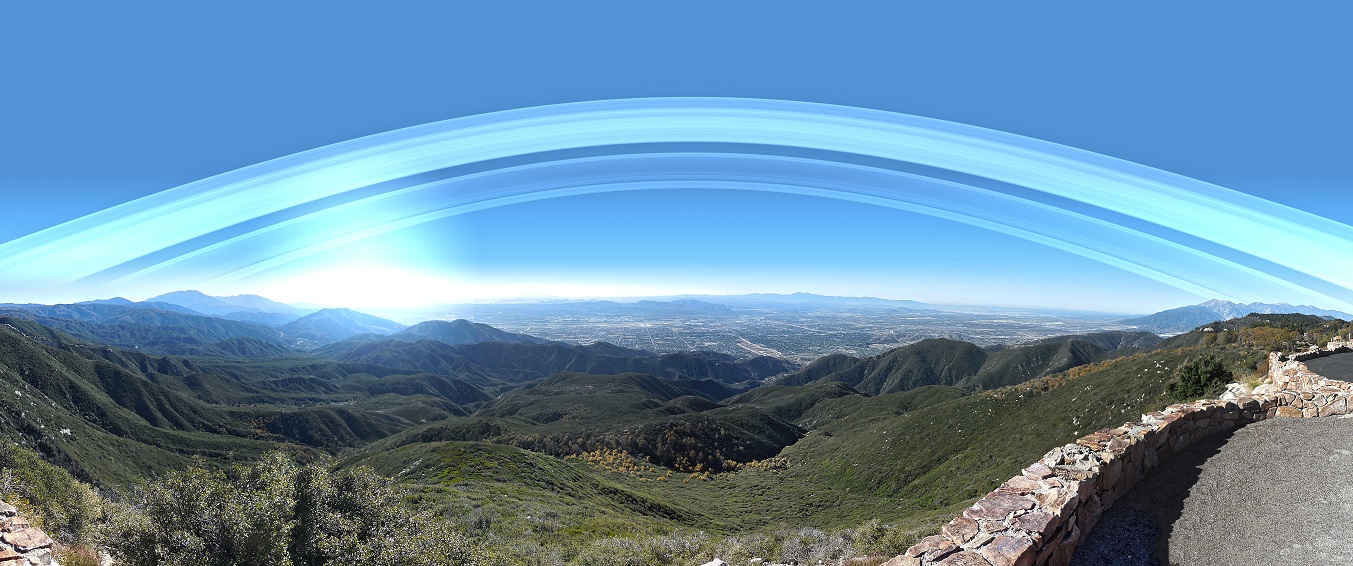Here’s a video that poses — and answers — an interesting question: what would Earth look like if it had rings like Saturn? This animation was done by artist Roy Prol, and it shows not only how the rings would look from space, but also the view Earthlings would have of the rings.
Prol says the ring views from Earth’s surface were created according to the location’s latitude and the viewer’s orientation, and that the size of the rings was calculated respecting the Roche limit for the Earth. As you can se in the video, the rings would look different, depending on where you were on our planet. A very intriguing concept, and the video is very well done.
The only bad thing about Earth having rings is that we probably wouldn’t have our beautiful Moon. Imagine, instead of all the songs, poems and paintings of the Moon over the past centuries, we’d have odes to our rings.
One of our favorite image editing artists is Kevin Gill, and he’s also created imagery of Earth having rings, such as our lead image, which shows Earth’s Rings over San Bernadino, California and this one, below:



It can look amazing, but I like the earth without the rings.
The moon is a lot of trouble for my observations and a ring like this would be worse.
At least, the moon disapear one week per mounth
Yeah, one wonders how life would have adapted to that much light at night.
“- Mommy, mommy, why do all animals have such large eyes?”
I’m actually curious how the shadow bands would shift over the surface – would there be areas that because of location were perpetually in the dark?
For northern hemisphere astronomers, the rings would be darker (on the shadowed shdowed side) during the winter, so light reflecting from the sun wouldn’t outshine the stars. However, the rings would still obscure the stars behind them.
I’m glad someone did this, as I have given the subject some thought. I wonder how our mythology would be different, and how soon our ancestors would have figured out what the rings are.
Great video!
Do want!
Can we start shepherding all the spacejunk into ring, please?
I am wondering if there is a reason why the rings would be located at the equator?
This wouldn’t last. Adding to perturbations from the Moon, much larger in proportion than any Saturn moon, this close to the Sun we also have a LOT more solar wind and sheer light pressure than out there in Giantplanetland. I’d bet any such Earth rings would be pretty short-lived.
Well if we increase the amount of orbital debris the stuff might gravitationally form a ring around the Earth 😉 . An interesting “what if” idea.
LC
@ Olaf:
Yes, there is one. It has to do with the direction of gravity (radially inward) and the direction of the centrifugal force (outward, but “parallel” to the equator and not radially away!!).If you draw a picture with the force vectors and then draw the resulting vector, you’ll find that there is always a little force that pulls the particles into the plane of the equator (only there the forces really cancel.
So the reason for rings is the same reason as for accretion disks 😉
@DrFlimmer
you mean this is caused because Earth is not perfectly round and gravity is not everywhere the same because of mountains you get these formation of a disk around the equator?
It could also be frame dragging.
But when 2 objects collide it could be in a ring not located over the equator for a few hundreds of years.
I am also wondering if the Moon could tilt it to it’s orbit tilt, or make completely disappear.
@ Olaf
No, this would also work, if the earth would be a perfect sphere.
There is one critical assumption to this. What you need are particles revolving around the earth in a plane parallel to the equator plane. Only in such a configuration will you find that the two forces (gravitational and centrifugal) are not (anti-)parallel to each other. Then the particles would feel a net-force that is not zero and would pull them into the equator plane.
The thing is that you need material that revolves in a more “cylindrical” than a “spherical” manner.
One should draw a picture 😉 . I have difficulties to explain it well…
The moons influence would, as I think, destroy the rings. The tidal forces are far too strong… (and the mass of the earth too less).
@ DrFlimmer
centrifugal forces, does that also have an effect in space? Unless you think that the atmosphere could be very thin but still have an effect on the ring since it is dragged by Earth..
But assume that you have a perfect vacuum between the ring and Earth. Would this centrifugal forces still have an effect?
And has this also an effect on our satellites that they tend to move towards the equater?
@ Olaf
You don’t need air to feel a centrifugal force. All you need is a “curved” trajectory. Everything that “goes” in circles feels a centrifugal force.
Classically spoken, the astronauts in orbit (on ISS or Space Shuttle) are weightless because the gravity of earth and the centrifugal force of their orbital trajectory are equal on magnitude and thus cancel each other (GR explains this a little different, but that’s not important).
In case you wonder: Yes, the ISS does not have an orbit around the equator. In fact, the orbit is tilted by several degrees (I don’t want to look it up 😉 ). Most satellites also do not fly along the equator. So why should my explanation in my previous posts have anything to do with rings? And why should they built up at all?
Well, as I tried to say, the center the particles revolve around should not be the center of the earth but the rotational axis (which obviously goes through the poles). In such a configuration, particles are pulled into the plane of the equator.
I can only repeat myself: A picture is better than 1000 words….
Probably this helps (the first thing I found after a long search 😉 )
upload.wikimedia.org/wikipedia/commons/3/39/Acceleration-due-to-Gravity-on-Earth.png